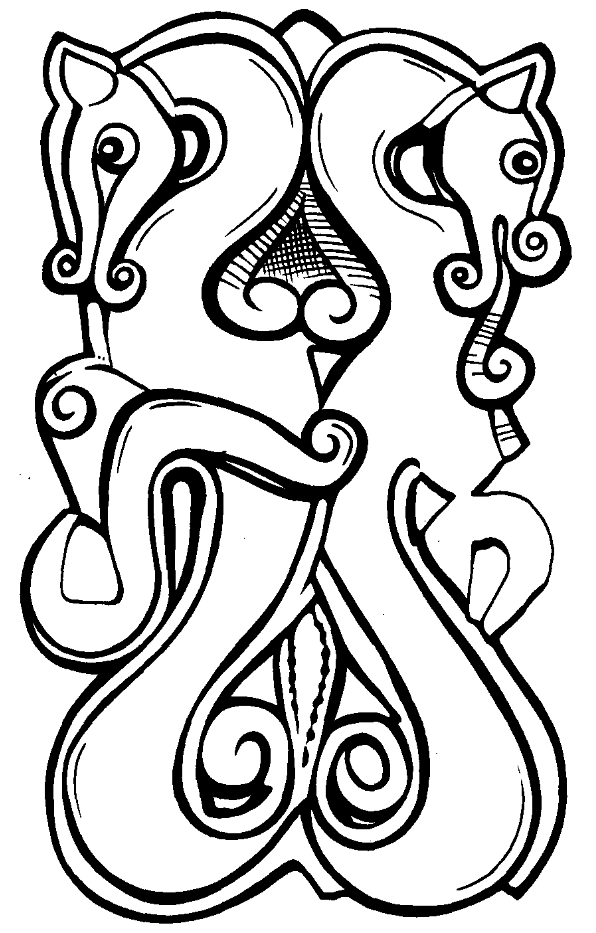“In the same neighbourhood as Chertomlyk is the Krasnokutsk barrow. In its mound Zabélin found the fragments of a funeral car broken up and piled in two heaps, and the usual remains of harness and trappings: in a special tomb were four horses with frontlets… These ornaments are interesting because of their remarkable resemblance to the northern beast-style usually associated with the early middle ages. Other two tombs had been completely stripped by plunderers who only left enough to let us judge that the contents were of the usual Scythic type,” – wrote Elis Minns in his 1913 book “Scythians and Greeks”. Later in the book, he returned to the topic: “The silver trappings from Krasnokutsk are specially remarkable… A more interesting example of this conventionalizing of animal forms is shown by certain horse trappings from Krasnokutsk. Here the design most clearly foreshadows the northern European beast-style“. When one thinks about the northen European animal style, one thinks of the Vikings in the first place. But Dr. Minns found parallels as far as Irealand: “The beast patterns already foreshadowed by the horse trappings from Krasnokutsk held their own longest as “Island varieties” in Ireland and Scandinavia, where they came to be thought autochthonous and characteristically Keltic or Northern. The way in which the handle of a bell from Llangwynodl Church, Carnarvonshire’, is treated might be Scythic”. How could the Irish and Scadninavians be related to the Scythians? The “Cradle of Civilizations” book tries to answer that question.
